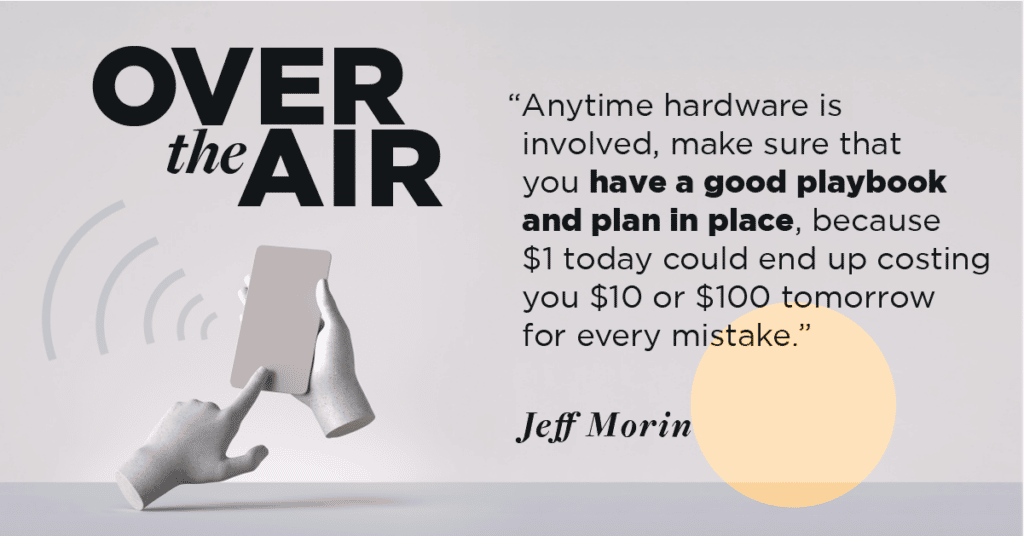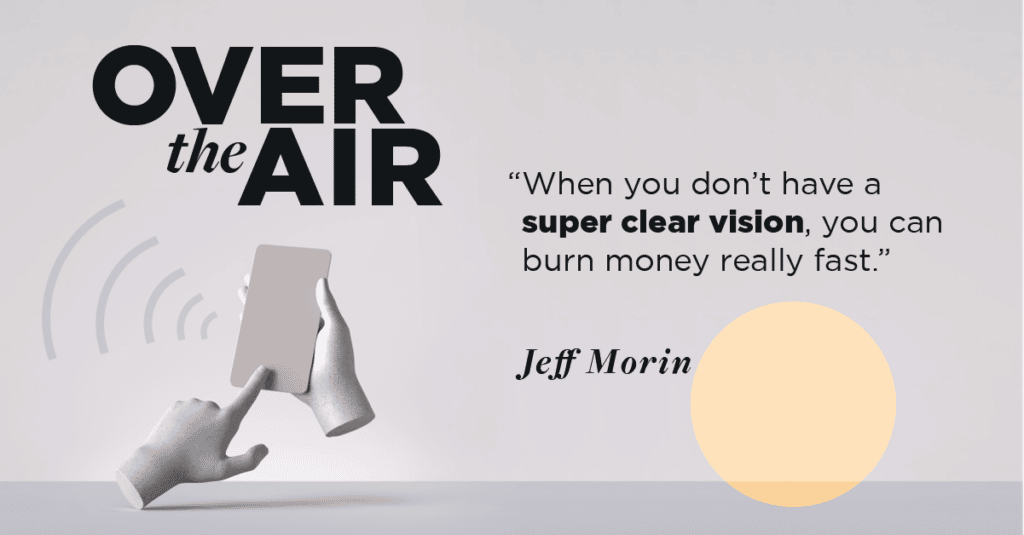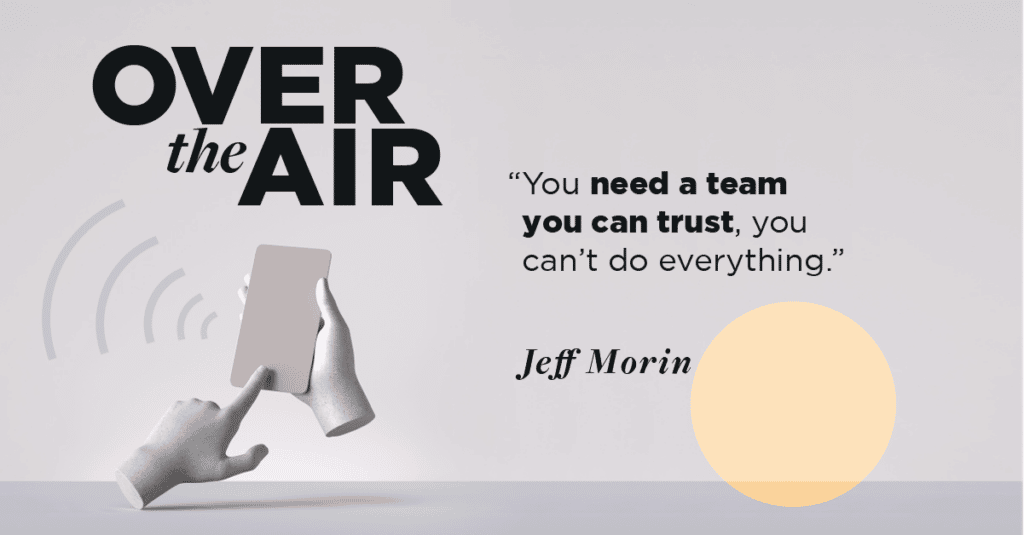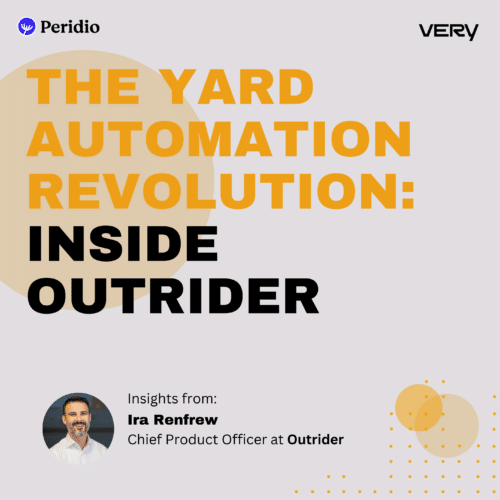Podcast
Episode 13: Jumping Into the Ring w/ a Punchable Computer
August 31, 2021
36 minutes
Typical hardware devices aren’t designed to withstand getting punched repeatedly every day. One reason is most hardware isn’t meant to be punched. Another reason is it’s pretty hard to develop hardware for that purpose.
In this episode, Jeff Morin, CEO and Founder at Liteboxer, discusses how his team tackled the challenges of creating a home boxing hardware platform that gamifies the workout experience.
Topics covered:
- Developing hardware in the consumer space
- Strategies for raising capital
- Leaving room for iteration
Determining core competencies and finding the right team
This post is based on a podcast episode with Jeff Morin, CEO and Founder at Liteboxer. To hear more interviews like this one, subscribe to Over the Air wherever you listen to podcasts.
Lightboxer’s Winning MO
Working out is good for you but sometimes it sucks and it’s just tough to find that motivation. Jeff’s team found the sweet spot between music, gaming, and fitness, giving us all the excuse to play more video games – woohoo!
The tech: a shield with sensors and 200+ LED lights that show you when and where to punch.
Gamified sports mentality is the future. Why? Because when you make it fun, people want more. Now people want more of what’s good for them: it’s a win-win-win.
Since boxing is a killer workout, it’s the underpinning sport of Liteboxer’s creation. They’ve blended boxing activities with rhythmic flow, made possible by their partnership with Universal Music Studio.
The program scores people on timing, accuracy, and force and enables friendly community challenges. Playtime is worthwhile.
They give the people what they want, which is why it works so well.
Developing Hardware in the Consumer Space
Startups tend to underestimate the incline of the hill they’ll climb in this niche. Your key hurdles will be:
- Planning: this isn’t SaaS. You can’t change some code and announce an available improvement tomorrow. You’ve got lead times for every step of the production and distribution process so get to know your facilities and operations better than the back of your hand.
- Capital: planning feeds into this. You know that saying: it’ll take twice as long, cost twice as much and you’ll make half as much as you planned for? Keep it in mind at all times. Be prepared to prove your product-market fit.

Strategies for Raising Capital
Make friends with a venture capitalist with a vested interest in your niche or industry. It works.
Jeff was fortunate enough to have a VC and Boxer in his social circle, who reached out to find a tech-wizard, but it’s not game over if you can’t say the same for yourself.
That product-market fit is going to be crucial, and you need a litmus test before you request the million-dollar bankroll.

Human capital is just as important as financial capital. Working with the right people and investors will allow you the time and space to strive for those breakthroughs that make sense of all the obstacles along the way.
Pro-tip from Jeff: don’t rule out crowdfunding. The same goes for friends and family. If both sides get something out it will be easier to access more and superior resources.
Leaving Room for Iteration
Ideation and Prototyping
Learn from the wise Thomas Edison, who found 1000 ways to not make a light bulb before that breakthrough finally arrived.
Make improvements when:
- You notice disinterested faces as you talk about or show someone a feature or function
- People twinge with confusion or frustration when trying your prototype
- Your spouse tells you to (the truth hurts sometimes)
Liteboxer’s Path to the Perfect Game-Workout-Jam-Session
Jeff’s team knew they wanted music early on. Their challenges of matching a computing system to some kind of boxing paraphernalia were only compounded by this. Let’s not forget product durability, since the whole idea is to punch the product every day for all eternity.
Their decision to evolve their flashing lights into runway lights was a spark of genius. It created the sporting experience of visually chasing an approaching object, for the brain to register how to respond ie. where to punch next.
It was at the PAX East video game convention in Boston that the breakthrough became evident. Suddenly things clicked:
- People were curious
- Eyes and faces lit up when players were about to start their round
- People finished their turn then got back in line for another round
That’s when they knew they had the winning formula.
Success Stops Nothing: Keep Iterating!
Get it right once and you have yourself a breakthrough. Then comes the halflife journey of constant R&D and deciding which features to launch with which future versions.
Jeff’s team places customer feedback at the core of their R&D plans. If you observe and engage, people will let you know how you can improve.
Finding the right people with the right competencies

Jeff started building the Liteboxer puzzle with two perfectly fitting pieces: himself and Todd, the VC/Boxer. Together, they built outward from there.
They hired to fill their skills gaps from the start, outsourcing before creating and filling full-time roles. This ensured that no money was burned up front and that resources could be managed with the company’s needs in mind as a first priority.
We could all pick up a thing or two here from Jeff, about preventing resource burn early on in the entrepreneurial game. What’s sticking with you from now on?
Never miss an episode of Over The Air by subscribing wherever you listen to podcasts.

Hosted by: Ryan Prosser
CEO at Very
As Very's CEO, Ryan collaborates daily with product, sales, and marketing to deliver the IoT solutions our clients look for. He is also a champion for our culture, fostering transparency and efficiency across our distributed team.










